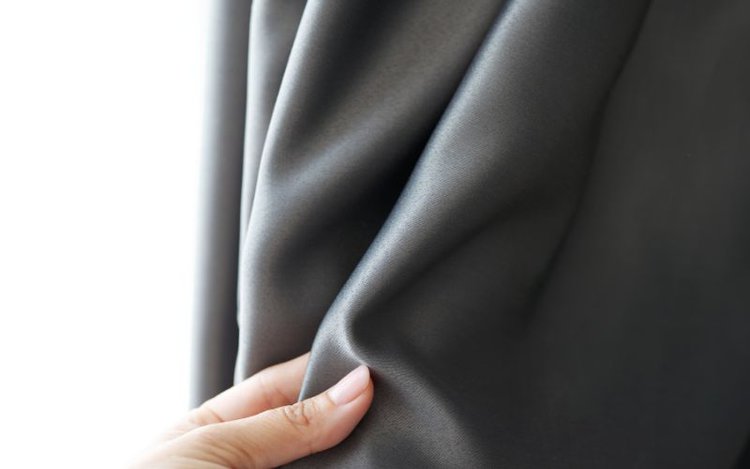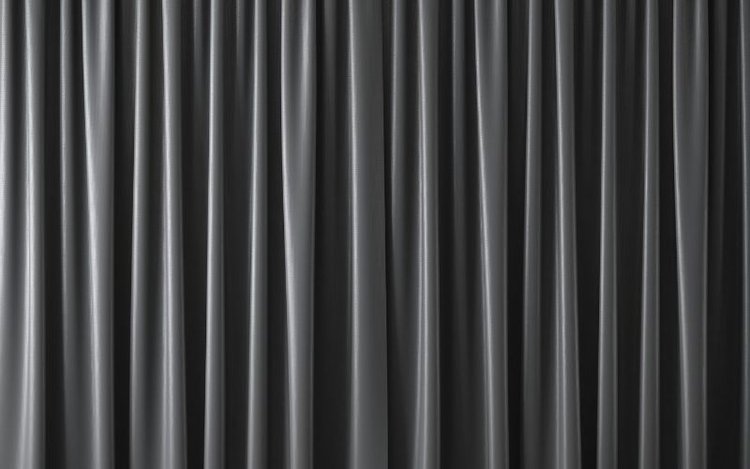Can Blackout Cloth Work as a Projector Screen?

What To Know
- Blackout cloth can effectively be used as projector screens because they are opaque and prevent light from passing through.
- While blackout curtains are generally made of a cotton-polyester blend and can be white or grey, the color and material quality are crucial for image quality.
- The surface should be non-reflective and the material should be able to hang flat without creases to provide a clear image.
This article explores whether a blackout curtain can meet your projection needs and compares it to other projector screen options. Let’s explore the possibilities.
Quick Navigation
Can You Use a Blackout Curtain for a Projector Screen?
Yes, you can use a blackout curtain as your projector screen.

Any opaque, solid color material that can hang flat can be used as a projection screen.
The keyword is “opaque.”
Bedsheets, for instance, are too translucent for projection. They may let through light, resulting in poor-quality images. The picture won’t be bright enough, the color accuracy would go for a toss, etc.
A blackout curtain does a great job of preventing light from permeating from the front or back.
If placed in front of the window, external won’t light pass through and infiltrate the indoors. That makes blackout curtains great for outdoor projection.
Similarly, projector light cannot pass through the screen, boosting image quality and overall projection performance.
Blackout Cloth vs. Real Screen Material
Blackout cloth is essentially a cotton-polyester blend that blocks out light entirely. The cloth material is preferred by projector users who are short on space and are considering hanging the screen in front of a window or balcony.
When not used to project visuals, blackout cloth prevents sunlight from passing through a window, working as any other window curtain.
Kindly note that “blackout” denotes the fabric’s ability to block out light. The cloth’s front is usually white or grey. The rear could be white or black.
Here’s one with white on both sides: Carl's Blackout Cloth . The Taotaole Blackout Cloth and Yescom DIY Projection Screen Material have white fronts and black rears.
Kindly note that a blackout cloth only works when it can block out light completely or cover the window completely. Therefore, measure your window and pick a curtain that can completely eclipse its physical dimensions.
How do blackout cloths compare to actual screen material?
As mentioned earlier, blackout curtains serve dual purposes.
An actual projection screen material, on the other hand, is designed to do just one job. The best thing about actual projector screen material is that critical parameters such as screen gain, light reflection capabilities, etc., are standard features. Moreover, they are usually cheaper and tend to display images a tad brighter.
Real projection screens could be made of different materials. They could be made of polyesters like this Mdbebbron 16:9, 120'' Projection Screen or the HOIN Projector Screen with Stand . Alternatively, the Nierbo Projector Screen is canvas, and the Mushow Inflatable Projector Screen is made of non-woven fabric.
What’s the Best Fabric for Projection Screen Use?
There’s no “best” projection screen fabric or material per se. But the ones that suit most people’s requirements are cloth materials, preferably with blackout properties.
If we had to pick one out specifically, a blackout cloth with a white front should be perfect in most scenarios. It’s non-reflective and has wide viewing angles.
The white front caters to a wide range of projection requirements and environments. The white surface may not provide the best contrast, but it ensures color correctness, thereby maintaining the sanctity of the images.
The fabric material is also usually stretchy, so you can easily erase creases or folds with proper tensioning.
Beyond Fabrics
If the discussion can transcend fabrics, a wall painted with screen paint would be ideal in most scenarios. The obvious drawback with this is it’s not portable.
Other projector screen materials, such as vinyl, PVC plastic, fiberglass, etc., are pretty serviceable too. But they could have some issues or may not suit all tastes. At times, the video output may just not be up to par.
Plastic screens, for instance, are inexpensive, light, and travel-friendly. But they are prone to wrinkling, which is a dealbreaker.
However, even blackout cloth is not perfect. As mentioned earlier, its performance and suitability could vary based on specific projection settings and requirements.
In other words, a host of factors such as the color, ambient light rejecting capabilities, smoothness, etc., determine performance.
At times, blackout cloth may need some leveling primer or projector screen paint treatment to achieve a brighter and smoother finish.
But because blackout cloth performs admirably in most scenarios and for most people, they tend to be the go-to screens for most projector users.
Conclusion
To conclude, you can project images onto a blackout curtain and achieve good results It is an excellent starter projection canvas.
Blackout curtains are relatively inexpensive, and their dual functionality means you’ll not feel compelled to pull out your projector just because there’s a screen waiting to be used.
Most people use blackout curtains for years and seem pretty content. It is often the only projector screen people use or would ever need.
Others, on the other hand, would want to try out different projector screens despite being pretty content.
If you are one of them, check out the other projector screens linked above.
Catherine Tramell has been covering technology as a freelance writer for over a decade. She has been writing for Pointer Clicker for over a year, further expanding her expertise as a tech columnist. Catherine likes spending time with her family and friends and her pastimes are reading books and news articles.

